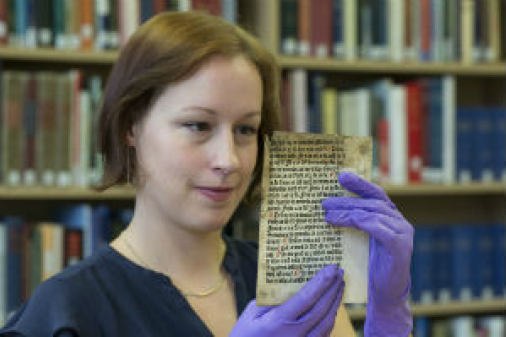A unique example of 15th century printed text by English printer William Caxton has been unearthed at the University of Reading.
Caxton was the pioneer of printing in England and the two pages, either side of a single leave, has got historians very excited.

Printed in 1476 or 1477, they are from the Sarum Ordinal or Sarum Pye, which instructed priests on the observance of feast days for English saints.
The leaf was found in the university's archives by Erika Delbecque, Special Collections librarian, and is thought to be worth up to £100,000.
Delbecque said: 'This well preserved item is the only one of its kind, and one of just two surviving fragments from this medieval Caxton book in existence.
'The leaf had previously been pasted into another book for the undignified purpose of reinforcing its spine. We understand it was rescued by a librarian at the University of Cambridge in 1820, who had no idea that it was an original Caxton leaf.
'I suspected it was special as soon as I saw it. The trademark blackletter typeface, layout and red paragraph marks indicate it is very early western European printing. It is incredibly rare to find an unknown Caxton leaf, and astonishing that it has been under our noses for so long.'
The fragment is written in mediaeval Latin and is from the Sarum Ordinal. This was the liturgy first established by St Osmund, Bishop of Salisbury, in the 11th century, that spread throughout England, Wales, Ireland and Scotland.
Osmund was a Norman appointed by William the Conqueror, and he brought his French liturgy over with him and based the Sarum rite on it. The Church of England retained it when it split from the Church of Rome in the 1530s, but it was replaced under Edward VI by the Book of Common Prayer. Queen Mary brought it back as part of her bloody restoration of Catholicism, but the Protestant Queen Elizabeth abolished it in 1559.
High Church Anglicans have a soft spot for the Sarum rite, as it is seen as English Catholic rather than Roman. It is elaborately ceremonial and dramatic.
The leaf from Caxton's book is a direct link back to a pre-Reformation Catholicism that defined the spiritual life of the nation for centuries.











